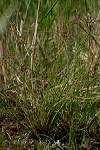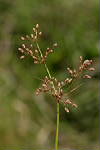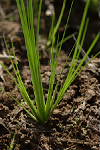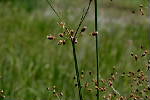



Botany Biology Phenology Distribution Agricultural importance Cultural control Biological control Chemical control
| Description : | Terrestrial, annual or perennial, tufted herb. Roots fibrous, white or brown. Stems erect, flat, solid, glabrous. The stem transversal section is four or five-angled and somewhat flattened. Stipules absent. Leaves simple, not lobed or divided, sessile, linear, more than 2 cm long/wide, margin entire, apex acute, base clasping. Leaf sheath present, rounded or compressed in cross section. Flowers bisexual, grouped together in a terminal umbel, sessile, green or brown, petals absent. Fruit a nut. |